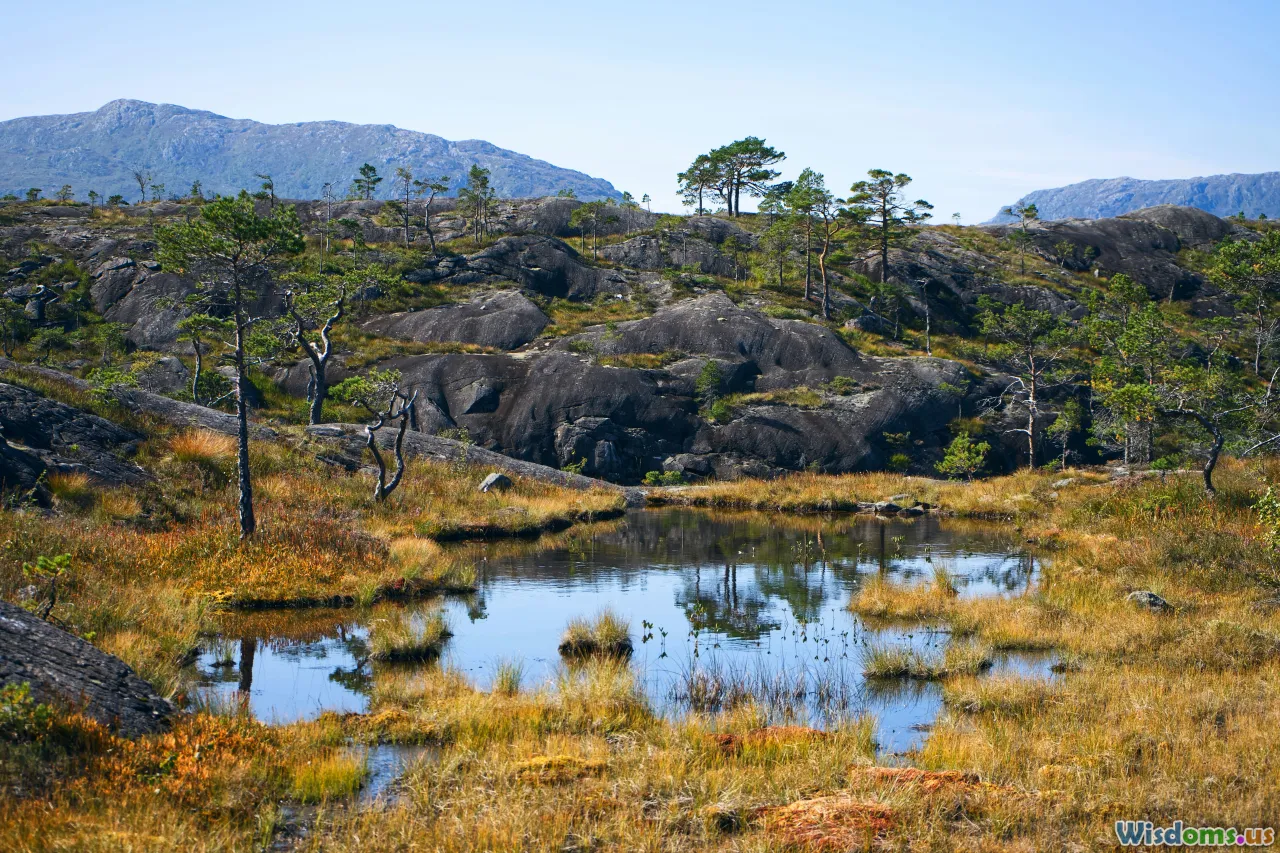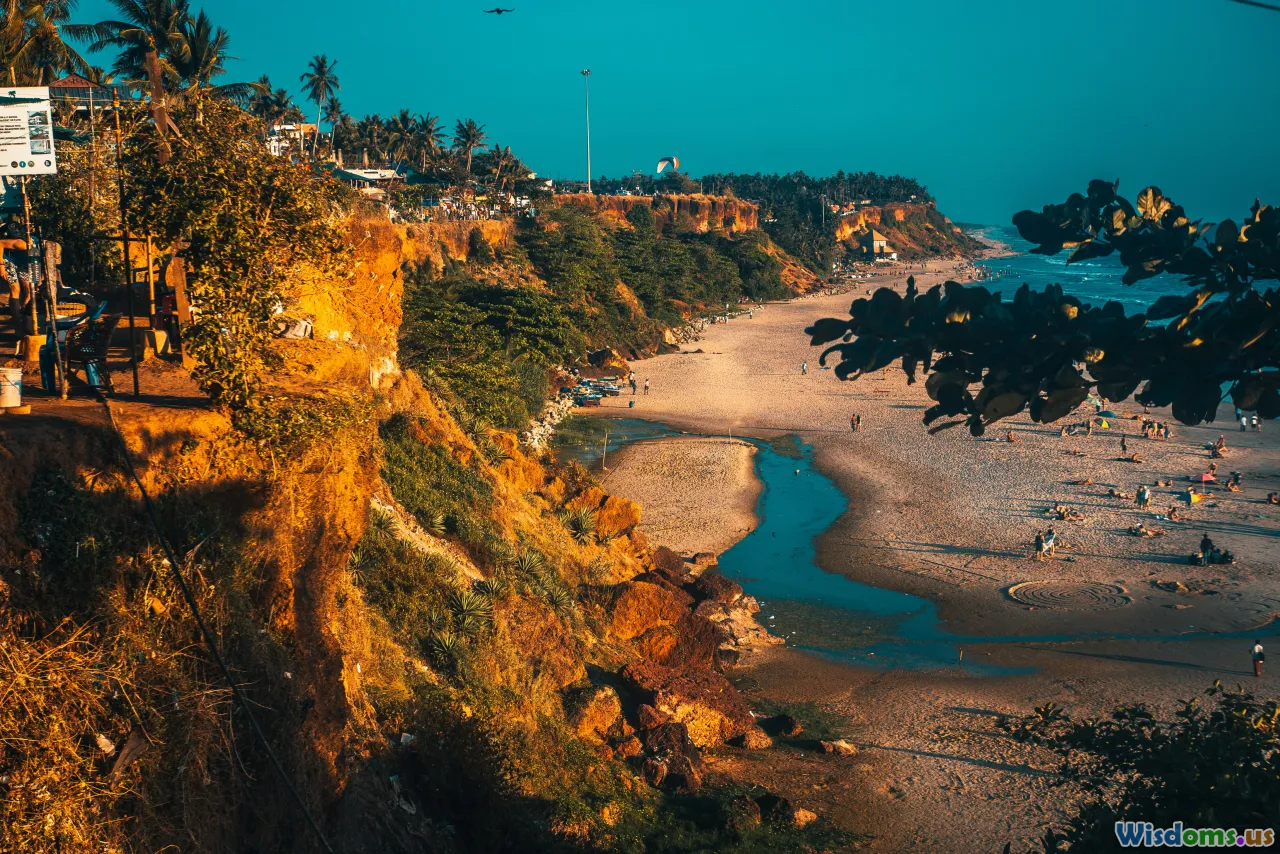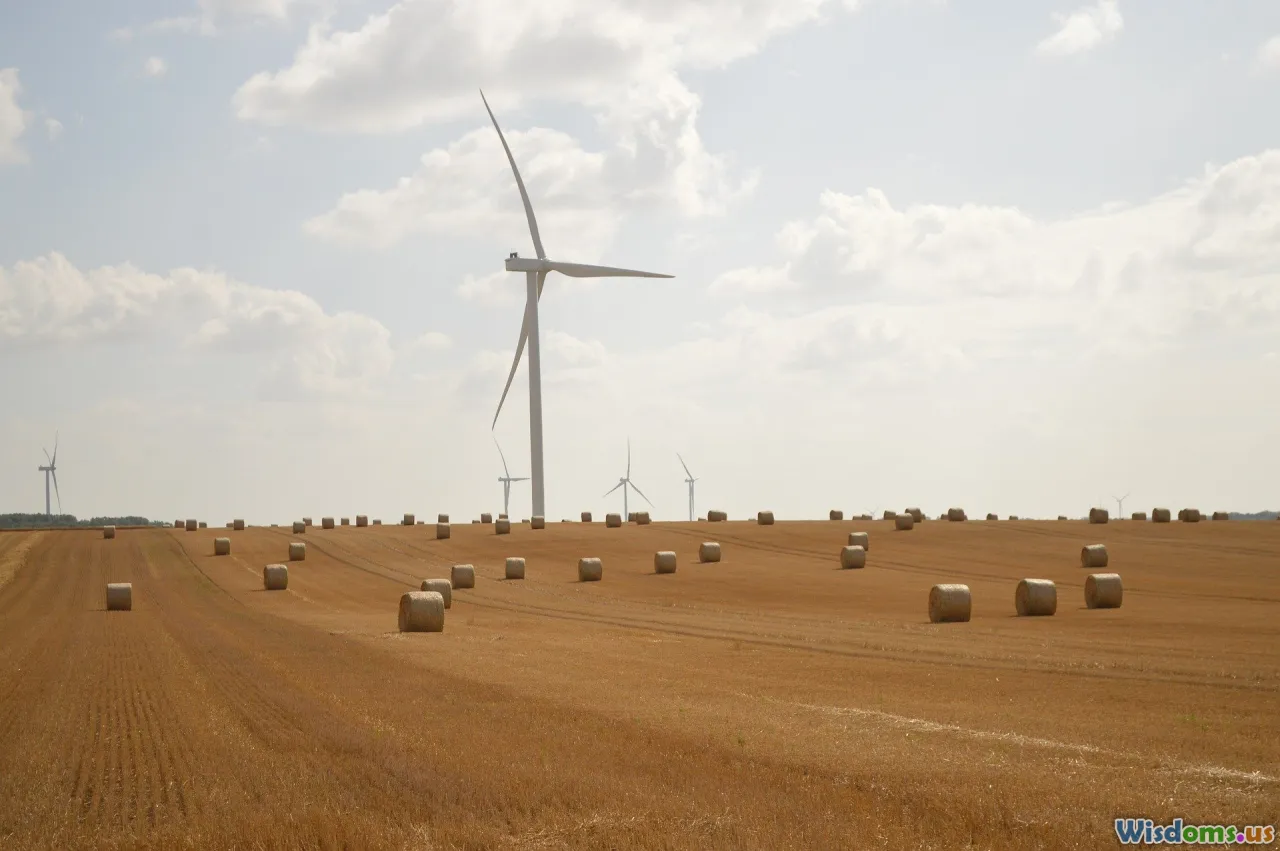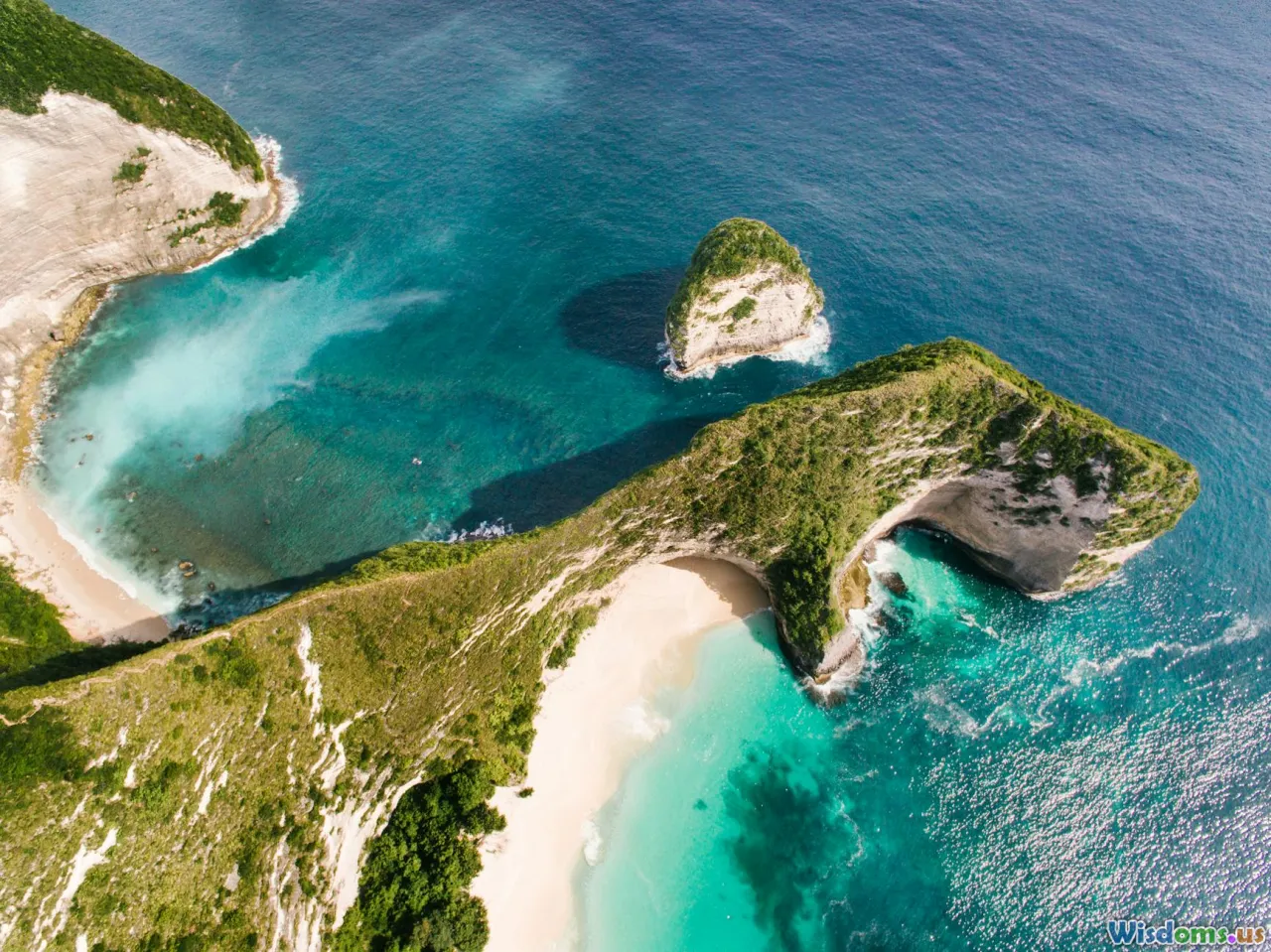
Data Reveals The Fastest Growing Destinations in 2024
16 min read Discover 2024’s fastest-growing travel destinations, powered by global tourism statistics and emerging trends. (0 Reviews)
Data Reveals The Fastest Growing Destinations in 2024
Travel is constantly reinvented as new locations emerge on the global stage and seasoned destinations reinvent themselves to attract new generations of visitors. The past few years have seen a seismic shift in travel preferences, with data from international tourism agencies and major booking platforms highlighting dynamic new hotspots across continents. In 2024, a blend of technology, renewed wanderlust, and socio-economic change is ushering in new winners. Let’s take an in-depth journey through the key destinations experiencing unprecedented growth, what makes them unique, and actionable insights for those considering adding these locations to their travel radar.
A Surge in Adventure and Nature-Focused Destinations

Following years of intermittent lockdowns and restrictions, 2024 has witnessed a remarkable surge in adventure and nature-centric travel. Travelers worldwide, particularly millennials and Gen Z voyagers, are seeking immersive experiences in destinations once considered off the beaten path.
Why Adventure Destinations Are Booming
A recent report from Adventure Travel Trade Association indicates a 34% year-over-year growth in bookings for nature and adventure tourism. From hiking the volcanic highlands of Costa Rica to diving into the pristine fjords of Norway, a growing cohort of travelers is prioritizing sustainability and authentic connection with the environment. This move away from metropolitan hubs to wilder, less-crowded regions is fueled by:
- Greater focus on sustainability,
- A desire for digital detox,
- Unique Instagrammable experiences,
- Government investment in ecotourism infrastructure.
Spotlight: Georgia (the Country)
Tbilisi and its surrounding wine-making regions have experienced a 68% rise in visitors, according to Skyscanner data. Adventure seekers are drawn by the epic hikes in Kazbegi National Park and the opportunity to experience distinct Georgian culture through local homestays — a model now supported by government grants tailored for rural tourism development.
Actionable Advice
- Booking with local guides and using eco-friendly tour operators is highly recommended by Lonely Planet for minimizing impact and maximizing cultural exchange.
- Opt for shoulder seasons (May–June, September–October) in peak eco-destinations like Georgia, to enjoy uncrowded sites and contribute to year-round local economies.
Urban Destinations Reinventing Themselves

Not every hotspot trending in 2024 is remote or secluded. In fact, major global cities are experiencing resurgences thanks to strategic urban renewal, booming culinary scenes, and technology-driven personalization in tourism.
Bucharest, Romania
Tourist data from the European Travel Commission shows double-digit annual growth in visitors to Bucharest. The city, once overshadowed by its Western European counterparts, is shaking its old stigmas. New art galleries in Lipscani, a thriving tech startup scene (Romania is #1 for IT talent per capita in the EU), and some of Europe’s most hectic underground nightlife are driving a rediscovery of the "Paris of the East.”
Seoul, South Korea
IHG Hotels’ quarterly travel report found a 41% increase in international stays in Seoul, powered by global K-culture appeal, pop music, film, and food. The city invests heavily in urban greening (like the Cheonggyecheon Stream), while its neighborhoods — such as Hongdae and Ikseon-dong — blend traditional hanok houses with innovative urban art.
Enriching the Urban Experience
Travelers leveraging city tourism boards’ digital passes enjoy skip-the-line access and curated local experiences — perfect for short visits. Seek out community-based walking tours for insights HIP guidebooks can’t match, plus chances to connect with local residents and support small business economies.
Emerging Beach Destinations: Beyond the Usual Sands

Caribbean and Mediterranean classics are still beloved, but the bikini-clad crowds are shifting toward quieter shores offering a blend of adventure, sustainability, and authentic local flavor.
Albania’s Riviera Coast
Booking.com ranked Albania as one of its top 5 fastest-climbing searches for the summer of 2024. The country’s southern coast — especially Ksamil, Dhërmi, and Himara — frequently trends on TikTok for their aquamarine bays, limestone cliffs, and affordable boutique guesthouses. With direct flights to Tirana from Europe’s main capitals, the once-remote Albanian Riviera now attracts a young, trend-conscious audience.
Mozambique’s Quirimbas Archipelago
Data from the World Tourism Organization notes Mozambique experienced a 24% year-on-year increase in international arrivals by spring 2024. What sets Quirimbas apart is its uncrowded islands, world-class diving, macuti-roofed beach lodges run by local families, and wildlife-rich marine parks. After years of political stability and new investments in eco-tourism, Mozambique’s islands are positioned as Africa’s next luxury-adventure beach paradise.
Insider Recommendations
- Learn a few words of the local language to connect with residents in lesser-touristed regions; small gestures go further here than in established resorts.
- Respect the fragile local ecosystems — opt for reef-safe sunscreens, limit plastic waste, and choose excursions operated by conservation-trained staff.
Fastest Growing Destinations in The Americas

The Americas, while long home to ever-popular sites like New York or Rio, have delivered a surprise: the fastest growth is found in mid-size cities and rural regions flexing their unique wildlife, ancestral cultures, and gastronomy.
Medellín, Colombia
Once infamous for all the wrong reasons, Medellín’s reinvention is dramatic. The city now welcomes over 1.2 million travelers annually, up 39% since 2021. Metro cable cars glide above its barrios, ferrying visitors to parks and vibrant neighborhoods like Comuna 13, filled with street murals and innovative start-ups.
Oaxaca, Mexico
While Tulum and Cancún feel busier than ever, 2024’s most talked-about Mexican destination is Oaxaca. TripAdvisor lists it as the fastest growing search destination in Mexico — and it’s easy to see why. Its exquisite food scene, world-celebrated Day of the Dead festivities, Zapotec ruins, and mezcal tours create a textured, immersive journey distinct from the typical resort.
Getting the Most from Emerging American Hotspots
- Follow local tourism authorities and responsible travel organizations for safety updates, especially regarding rural travels and eco-excursions.
- Seek home or boutique stays with strong local community integration — these properties often offer added experiences like market tours or indigenous craft workshops.
Asia’s Young Tourism Tigers

Asia’s fastest growing tourist hubs for 2024 reflect a shift from traditional mega-destinations like Bangkok or Bali to dynamic cities and regions blending modern cool with deep, local tradition.
Da Nang, Vietnam
Vietnam Airlines reports over 13 million passenger arrivals in Da Nang in just the first half of 2024, an astounding 55% jump. Beyond its Golden Bridge and surf beaches, Da Nang is now highly rated for digital nomad infrastructure, vibrant street food districts, and family-friendly attractions.
Bhutan’s Eco-Focused Rebirth
With newly flexible entry fees and expanded “high-value, low-impact” tourism initiatives, Bhutan is up 44% in foreign visitors through mid-2024. Here, eco-lodges, community-based trekking, and commitments to carbon-negative tourism make the Land of the Thunder Dragon uniquely future-forward — especially appealing to sustainability-conscious millennial travelers.
Pro Tips for Traveling Through Emerging Asia
- Use cashless local payment apps, frequently adopted in Asia’s rising cities, to access metro, taxis, or pop-up markets seamlessly.
- Take part in conservation or cultural workshops offered in destinations like Bhutan or Vietnam to deepen your understanding — and give back to the local community.
The Power of Data: What’s Driving These Trends?

It’s not just anecdotal buzz fueling interest in these destinations; data from both industry insiders and tech platforms paint a clear picture of why and how tourism patterns are evolving:
- Skyscanner’s 2024 Travel Pulse Report: lists over 20 emerging destinations, ranking Albania, Georgia, and Mozambique up more than 30% in search volume compared to the previous year.
- Airbnb analytics: show a strong correlation between increased remote work policies and spikes in longer, experience-driven stays in cities like Medellín and Da Nang.
- Mastercard Economics Institute: predicts leisure travel across the Asia-Pacific alone will eclipse pre-pandemic levels by 20% this year, with lesser-known cities seeing the sharpest upticks.
- Social media virality: plays a decisive role. Popular TikTok or Instagram travel content can drive overnight surges — for example, searches for Ibukota, a remote beach on Sulawesi, jumped nearly 700% after a viral influencer post.
Major airlines, regional authorities, and travel tech companies are racing to support these growth trends with:
- Expanded low-cost route networks,
- Multilingual tourism resources,
- Remote-work-friendly visa policies,
- Granular data insights guiding investment in local experience offerings and infrastructure.
Responsible Growth: Balancing Popularity with Protection

Rapid increases in tourist arrivals can jeopardize fragile ecosystems and overwhelm local communities — even as travel propels vital economic opportunity. A sustainable approach is key:
Case Study: Costa Rica’s Blueprint
Tourism accounts for nearly 9% of Costa Rica’s GDP, and it’s often cited as a leader in sustainable tourism management. Through a country-wide Certification for Sustainable Tourism (CST), local businesses are encouraged — and rewarded — for:
- Reducing waste,
- Conserving water,
- Safeguarding biodiversity,
- Ensuring fair labor practices.
Other destinations are watching and replicating Costa Rica’s model, cultivating direct traveler involvement in conservation through reef cleanup, wildlife monitoring excursions, or carbon offset programs.
Tips for the Conscientious Adventurer
- Verify certifications: Seek out eco-labels and fair trade certifications for lodges and tour providers.
- Minimize air travel’s footprint: Consider visits with longer stays and multi-region train or bus travel once in your chosen country.
- Support local: Patronize regional guides, artisans, and farms; avoid imported or chain offerings when possible.
What’s Next? Emerging Hotspots to Watch

While 2024’s data also highlights perennial all-stars, several relative newcomers are poised for major growth as infrastructure and awareness increase:
- Uzbekistan with its ancient Silk Road cities steps into the global limelight, offering dazzling architecture and a wave of boutique hotels.
- Rwanda, with a flourishing wildlife- and art-tourism sector in Kigali and new hikes into volcanically lush national parks, is staking a claim as Africa’s next premium eco-destination.
- Slovenia, already a favorite for sustainable tourism advocates, is becoming Central Europe’s wellness capital, fueled by thermal spas and a vibrant food culture supported by Michelin stars.
Media visibility, easier access, and ever more sophisticated traveler preferences suggest we’re witnessing only the beginning for these “soon-to-boom” locales.
As travel in 2024 reaches vibrant new frontiers, the message is clear: the world’s next most coveted destinations fuse authentic experience, cultural connection, and responsible stewardship. Whether you are chasing adventure across Georgia’s wild mountains, contemplating art in Bucharest’s hip quarters, or savoring mezcal in Oaxaca’s colonial plazas, these fast-rising destinations offer more than a vacation — they promise a window into the next era of travel. As always, curiosity, respect, and sustainable choices will guarantee your journey leaves lasting, positive footprints on the places and people you encounter.
Rate the Post
User Reviews
Other posts in Travel Trends
Popular Posts
















